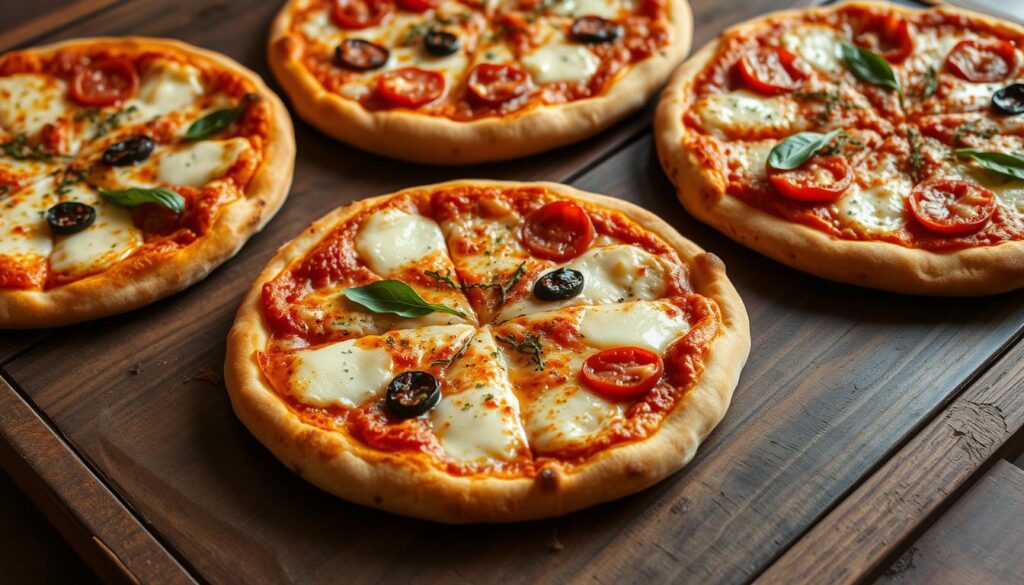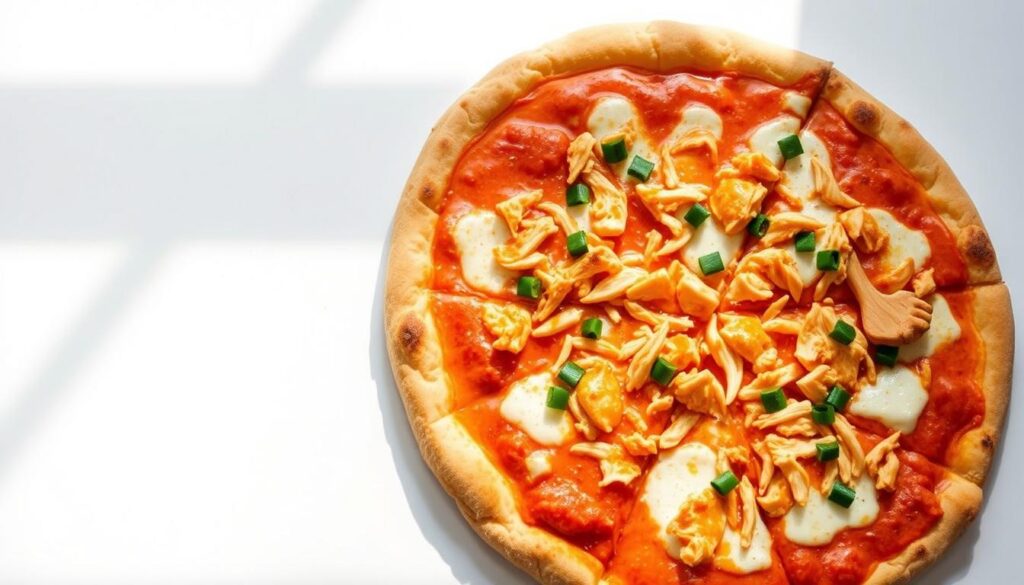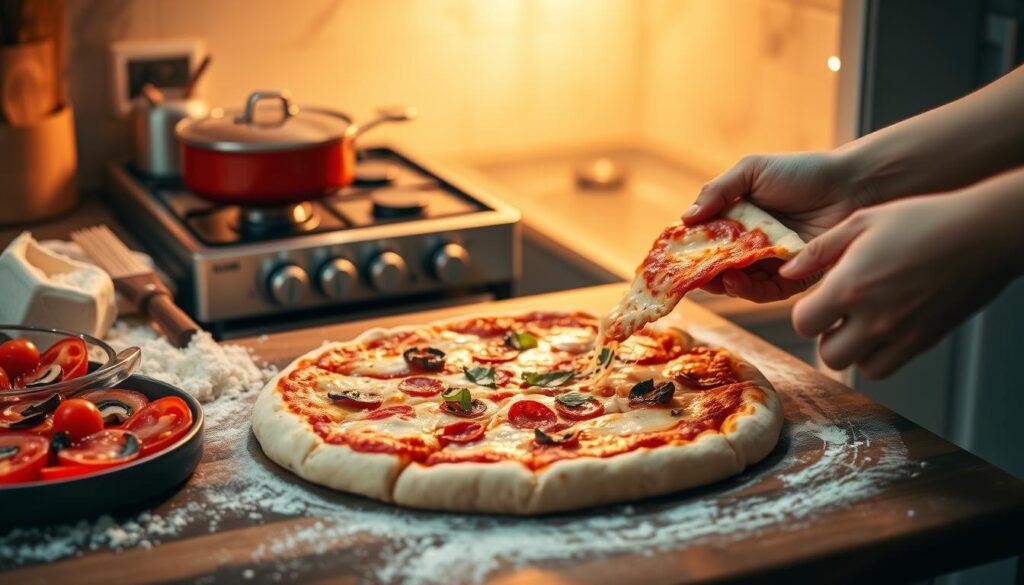
Making homemade pizza is a delightful culinary adventure that brings a touch of creativity and flexibility to your kitchen. With many pizza recipes available, you can craft the perfect pie that caters to your personal taste—from classic margheritas to inventive gourmet toppings. As cooking at home continues to gain popularity, this guide serves as your ultimate resource for mastering the art of pizza making. With the right ingredients and techniques, you’ll be able to enjoy a restaurant-quality pizza without leaving your home.
Key Takeaways
- Homemade pizza allows for creativity and personalization.
- There are countless pizza recipes to explore and enjoy.
- Cooking at home provides an affordable way to enjoy gourmet meals.
- Mastering the basics of pizza making can enhance your cooking skills.
- Gathering with friends and family over pizza is a great social experience.
Introduction to Homemade Pizza
Pizza is more than just a meal; it has a rich pizza history that traces back to its origins in Naples, Italy. The traditional Neapolitan pizza created from simple ingredients has inspired countless variations worldwide. As various cultures adopted pizza, they contributed unique pizza styles that reflect regional tastes and preferences. From the deep-dish creations of Chicago to California’s innovative thin crusts, the diversity of pizza is a testament to its global appeal.
Recently, the trend of making homemade pizza has surged, particularly among families looking to customize ingredients and flavors according to their preferences. This resurgence allows cooks to explore personal creativity while often producing healthier options compared to restaurant-made counterparts. People appreciate the bonding experience of preparing and sharing homemade pizza together, making it an ideal choice for gatherings, celebrations, or cozy family dinners.
Essential Ingredients for Pizza Making
Creating the perfect pizza starts with selecting quality pizza ingredients. The foundation of any great pizza lies in the dough, which is comprised of flour, water, yeast, and a pinch of salt. Different types of flour, such as all-purpose or tipo “00”, can significantly influence the texture of the crust. A well-made, crispy base serves as the ideal canvas for your toppings.
Next, we have the sauce, a critical component that adds flavor and moisture. Traditional marinara, made from San Marzano tomatoes, provides an authentic Italian taste, while pesto offers a fresh alternative. Finding a sauce that matches your personal preference can elevate the entire experience of your homemade pizza.
No pizza is complete without cheese, and options abound. Fresh Mozzarella from reputable brands like BelGioioso melts beautifully and contributes a creamy richness. Additions such as Parmigiano-Reggiano or sharp cheddar can enhance the flavor profile, creating a delightful contrast.
Finally, toppings bring your culinary masterpiece to life. From pepperoni and mushrooms to roasted vegetables and fresh herbs, the choices are endless. Selecting high-quality pizza ingredients is essential for achieving that restaurant-quality taste at home.
Classic Pizza Dough Recipe
The secret to a great homemade pizza lies in the dough. A well-crafted pizza dough recipe creates the perfect foundation for your toppings. This section outlines the essential ingredients for crafting classic pizza dough and provides a simple guide on how to make pizza dough from scratch.
Ingredients for Perfect Pizza Dough
- All-Purpose Flour: This forms the base of your dough, providing structure and chewiness.
- Instant Yeast: A key ingredient that helps the dough rise, giving it a light and airy texture.
- Warm Water: Activates the yeast and hydrates the flour during dough preparation.
- Salt: Enhances flavor and strengthens the gluten in the dough.
- Olive Oil: Adds richness and helps create a crispy crust.
Step-by-Step Guide to Making Pizza Dough
Making pizza dough is straightforward and rewarding. Follow this step-by-step process to achieve professional-quality results:
- In a mixing bowl, combine warm water and yeast. Allow it to sit for about 5 minutes until it becomes frothy.
- Add flour, salt, and olive oil to the yeast mixture. Stir with a spoon until a shaggy dough forms.
- Transfer the dough onto a floured surface. Knead for about 8-10 minutes until smooth and elastic.
- Place the dough in a lightly oiled bowl, cover it with a damp cloth, and let it rise in a warm area for about 1-2 hours, or until it doubles in size.
- Once risen, punch down the dough to release air. Now it’s ready for stretching and topping!
Best Pizza Sauces to Elevate Your Slice
Creating the perfect pizza goes beyond just a great crust; the right pizza sauce plays a crucial role in defining its flavor. Whether opting for a classic marinara sauce or exploring alternative pizza sauces, each choice can dramatically enhance your homemade pizza experience. Let’s dive into the best options available to you.
Homemade Marinara Sauce Recipe
A homemade marinara sauce brings fresh flavors that store-bought options often miss. With juicy tomatoes and aromatic herbs, the quality of the ingredients makes a significant difference. Here’s a simple recipe to get you started:
- 2 tablespoons olive oil
- 4 cloves garlic, minced
- 1 can (28 ounces) crushed tomatoes
- 1 teaspoon dried oregano
- 1 teaspoon sugar
- Salt and pepper, to taste
- Fresh basil leaves, for garnish
Begin by heating olive oil in a saucepan over medium heat. Sauté the minced garlic until fragrant, usually around 1 minute. Add the crushed tomatoes, oregano, sugar, salt, and pepper. Simmer on low heat for about 20 minutes. Finish the sauce with fresh basil leaves. This homemade sauce will provide a rich base for your delicious pizza.
Creative Pizza Sauce Alternatives
Branching out from traditional pizza sauce can add exciting flavors to your cooking. Here are some creative alternatives to consider:
- Pesto: This basil-based sauce introduces a fresh, herbaceous tone that pairs beautifully with vegetables or chicken.
- White Sauce: Made from a creamy base, this sauce works wonders as a base for gourmet pizzas, especially those topped with spinach and ricotta.
- Barbecue Sauce: Experimenting with BBQ sauce can add a smoky sweetness, especially when paired with chicken or pork toppings.
Trying different sauces will not only elevate your homemade pizza but also surprise your taste buds. Each sauce can change the overall experience, making your pizza night anything but ordinary.
Top Toppings for Delicious Pizza
When it comes to creating the perfect pizza, the choice of toppings can make all the difference. Exploring various pizza toppings allows everyone to experience a delightful slice catered to their preferences. Whether you prefer the familiarity of classic pizza toppings or you’re eager to explore unique topping combinations, there’s something for every palate.
Popular Toppings to Try
Start with some of the most beloved pizza toppings that bring rich flavors to the table:
- Pepperoni
- Mushrooms
- Bell Peppers
- Onions
- Olives
These classic ingredients work well together in a variety of topping combinations, creating mouthwatering pizzas that please a crowd. Consider a classic pepperoni and mushroom mix for a taste that’s tried and true.
Vegetarian and Vegan Topping Ideas
For those who prefer a meatless option, the world of vegetarian pizza is vibrant with possibilities. Explore these delicious vegetarian and vegan toppings:
- Roasted Vegetables
- Spinach and Artichokes
- Vegan Cheeses
- Plant-Based Proteins
- Fresh Basil and Arugula
These toppings not only enhance the flavor of any pizza but showcase how satisfying vegan toppings can be. When combined thoughtfully, each option contributes to a rich, savory experience, proving that pizza can be an inclusive dish for all diets.
Innovative Pizza Recipes to Experiment With

Get ready to elevate your pizza game with these innovative recipes that bring unique flavors and excitement to your dinner table. Trying out a Buffalo chicken pizza recipe or a BBQ pulled pork pizza allows for delightful variations on the classic pie, sure to please everyone’s palate.
Buffalo Chicken Pizza
This spicy pizza delivers a kick that will satisfy lovers of bold flavors. Start with a traditional pizza base and top it with shredded chicken tossed in a zesty Buffalo sauce. For added creaminess, a homemade bleu cheese dressing drizzled on top takes this dish over the edge. Include fresh vegetables like celery and green onions to balance the heat and make every bite fantastic.
BBQ Pulled Pork Pizza
For fans of Southern BBQ, this pulled pork pizza will be a highlight. Begin with a rich barbecue sauce as your base, layering it with tender pulled pork. Add thin slices of red onions and a sprinkle of cilantro for flavor that complements the sweetness of the BBQ. This combination creates a mouthwatering BBQ pizza that takes comfort food to new heights.
| Recipe | Main Ingredients | Flavor Profile |
|---|---|---|
| Buffalo Chicken Pizza | Shredded chicken, Buffalo sauce, bleu cheese dressing | Spicy, tangy, creamy |
| BBQ Pulled Pork Pizza | BBQ sauce, pulled pork, red onions, cilantro | Sweet, smoky, savory |
Pizza for Special Diets
Creating delicious pizza options for special diets has never been easier. Individuals with dietary restrictions can enjoy their favorite dish without compromising their health goals. Gluten-free pizza bases use alternative flours, providing an excellent option for those avoiding gluten. One popular choice is almond flour, which gives the crust a rich flavor and satisfying texture.
Low-carb pizza enthusiasts can rejoice with inventive crusts made from cauliflower. This innovative approach not only reduces carbohydrates but also enhances the nutritional profile of the meal. Keto pizza lovers will find that a cauliflower crust satisfies both cravings and dietary needs, allowing them to indulge without guilt.
Here’s a quick comparison of different crust options for various diets:
| Type of Pizza | Crust Ingredient | Carbohydrate Content |
|---|---|---|
| Gluten-Free Pizza | Almond Flour | Low |
| Low-Carb Pizza | Cauliflower | Very Low |
| Keto Pizza | Cheese and Eggs | Minimal |
These crusts can serve as perfect vehicles for your favorite toppings. Whether piled high with vegetables or loaded with protein, pizza can cater to any dietary need while delivering great taste. Celebrate the diversity of pizza by exploring different crust options tailored to specific diets.
Tips for Baking the Perfect Pizza at Home

Baking pizza at home can be a delightful experience, especially with the right techniques. One of the most beneficial pizza baking tips involves investing in a quality pizza stone. This tool helps distribute heat evenly, resulting in a beautifully crisp crust. Preheating your home oven is essential; aim for at least 475°F (245°C) before placing your pizza inside. This high temperature mimics traditional pizza ovens.
Timing plays a crucial role in perfecting your bake. A pizza typically needs about 10-12 minutes to cook properly, but keep a close eye during the last few minutes to avoid burning. Adjust the time based on the thickness of your crust and the amount of toppings used.
Avoid overcrowding your pizza with too many toppings. While it’s tempting to pile on the ingredients, a well-balanced pizza allows for better heat circulation. As you gain experience, don’t hesitate to experiment with different styles and recipes.
Creative Pizza Presentation Ideas
Captivating your guests starts with a thoughtful pizza presentation. When serving pizza, the visual aspect can elevate the experience significantly. Simple techniques, such as cutting the pizza into different shapes—think triangles, squares, or even hearts—can add a fun twist. Incorporating color through garnishes can make every slice more inviting.
Pizza styling goes beyond just how it looks when served. Use vibrant plates or wooden boards for a rustic touch. Adding fresh herbs like basil or parsley as a final garnish adds not only flavor but also a splash of color, enhancing the overall appeal. Consider using contrasting sauces drizzled over the top, or a light dusting of parmesan to entice your diners even further.
Experiment with different serving styles. Instead of traditional slices, serve mini pizzas or pizza bites for a shareable experience. Placing small bowls of varied toppings on the table allows guests to personalize their pizza, turning an ordinary meal into an exciting and interactive event.
Engaging your audience through thoughtful pizza presentation can transform a simple meal into a memorable occasion. Explore these creative ideas to inspire not just your cooking, but the joy of sharing your culinary creations with others.
Why Pizza is Perfect for Every Occasion
Pizza stands out as a quintessential food choice suitable for any event. Its versatility makes it a prime contender for gatherings ranging from casual dining at home to lavish pizza parties. The ability to customize toppings allows hosts to cater to diverse palates, ensuring everyone finds a slice they enjoy.
Whether it’s a family dinner, a team celebration, or casual get-togethers with friends, pizza fits seamlessly into the dining experience. It invites sharing and communal enjoyment, creating an atmosphere of fun and camaraderie. For larger occasions, pizzas can be easily scaled up, making them the perfect solution for pizza for events.
The presentation can be as simple or elaborate as desired, enhancing the dining experience. With options like gourmet toppings and unique crusts, pizza can transform from everyday fare into an artful meal, suitable for any gathering.
Conclusion
In this homemade pizza conclusion, we’ve explored the delightful journey of pizza making, highlighting how accessible and rewarding it can be for everyone. From crafting the perfect dough to selecting fresh, exciting toppings, the process of creating your own pizza involves creativity and personalization, making each pie a unique expression of your taste. The joy of preparing homemade pizza doesn’t merely lie in the final product; it’s also about the memorable moments spent in the kitchen with family and friends.
This summary of various pizza recipes and techniques showcases the versatility of this beloved dish. Whether you’re aiming for a classic Margherita or an innovative BBQ pulled pork style, the options are plentiful. Each recipe invites you to tap into your culinary skills while providing the satisfaction of producing something delicious from scratch.
So, gather your ingredients, don your apron, and dive into the world of pizza making. You may just find that the best slice comes from your own oven. Embrace the adventure, enjoy the process, and savor the rewards of your homemade creations!
FAQ
What are the best flours for making pizza dough?
The best flours for making pizza dough typically include all-purpose flour and 00 flour for more traditional Neapolitan-style pizza. Bread flour is also a great option if you’re looking for a chewier crust due to its higher protein content.
How can I achieve a crispy pizza crust?
To achieve a crispy pizza crust, it’s essential to use a pizza stone or a baking steel, preheat your oven to a high temperature (ideally around 475°F to 500°F), and avoid using too much sauce and moisture in your toppings.
Are there any good gluten-free pizza options?
Yes, several gluten-free options exist, including using almond flour, cauliflower crust, or purchasing pre-made gluten-free pizza bases available in many grocery stores. Just ensure to check for dedicated gluten-free products to avoid cross-contamination.
What types of cheese work best for homemade pizza?
For homemade pizza, fresh mozzarella is a classic choice. You can also use provolone, parmesan, or fontina for added flavor. Mixing different cheeses can enhance the taste and texture of your pizza.
Can I make pizza ahead of time?
Absolutely! You can prepare your dough in advance and refrigerate it for up to 3 days. Additionally, pre-chop your toppings and store them in the fridge till you’re ready to bake, making it quick and convenient on pizza night!
How can I make pizza sauce from scratch?
To make pizza sauce from scratch, simply blend canned San Marzano tomatoes with garlic, olive oil, salt, and herbs like oregano and basil. Allow the sauce to simmer for a richer flavor, and customize it to your liking by adding spices!
What are some vegan pizza topping ideas?
Vegan pizza toppings can include a variety of options such as roasted vegetables, vegan cheeses, nutritional yeast, and plant-based proteins like tofu or tempeh. You can get creative with toppings like avocado or fresh herbs to enhance the flavor.
How do I properly store leftover pizza?
To store leftover pizza, wrap it in foil or plastic wrap, or place it in an airtight container to keep it fresh. Refrigerate it for up to 3 to 4 days. You can also freeze slices for longer storage, just reheat in the oven for the best results!
What’s the secret to making a great marinara sauce?
The secret to a great marinara sauce lies in using high-quality tomatoes, fresh garlic, and a mix of dried herbs. Simmer the sauce to deepen the flavors, and be sure to add a pinch of sugar to balance acidity if necessary.